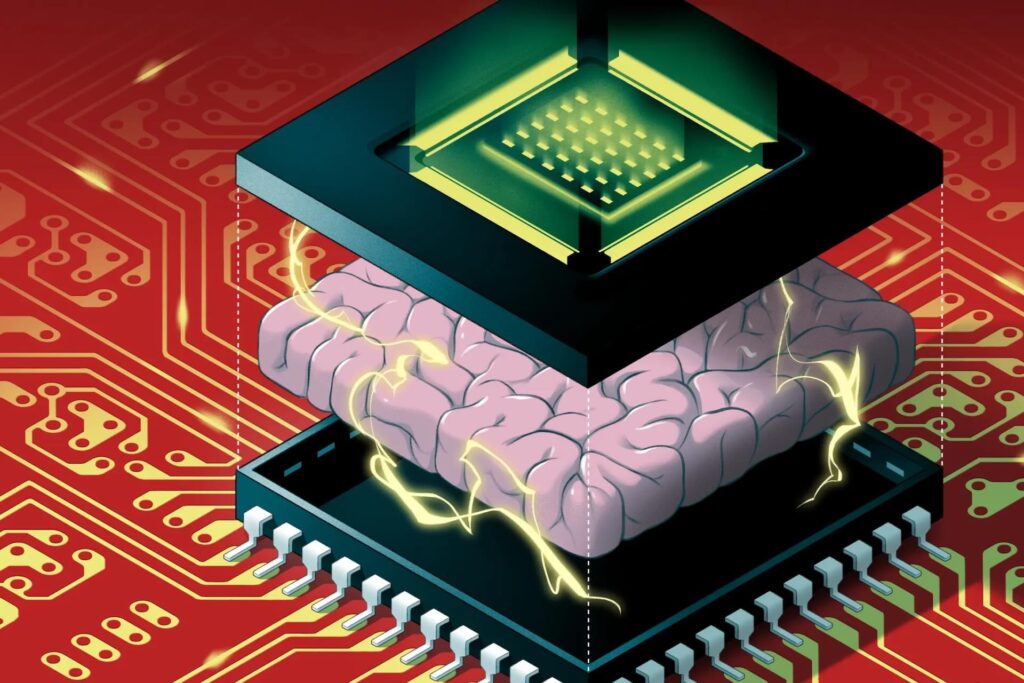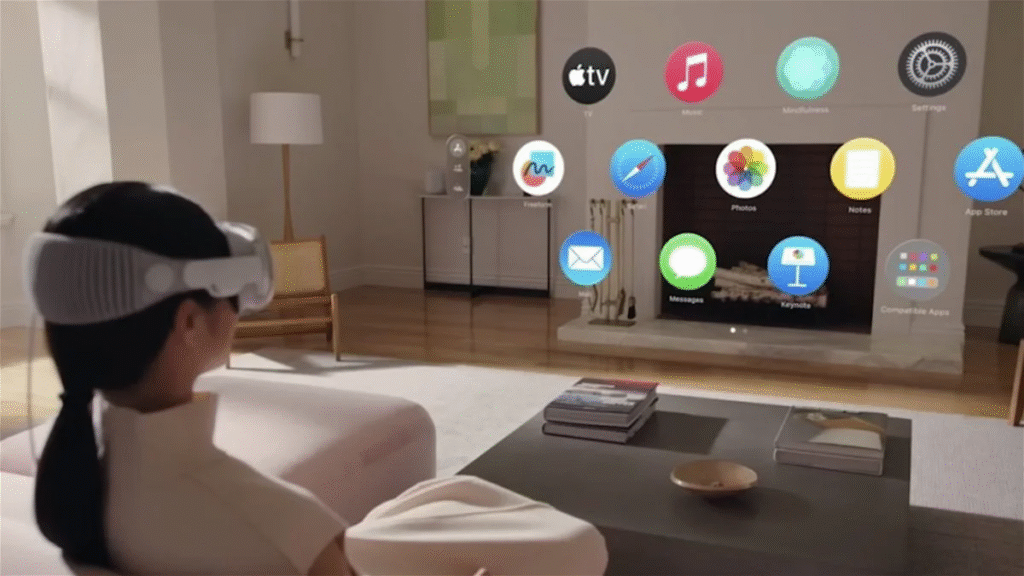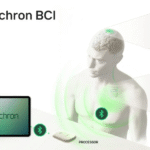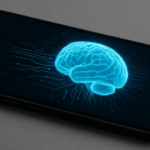Introduction
The world of accessibility is on the verge of a major breakthrough. Apple, known for its innovation and user-centric design, is now venturing into the realm of brain-computer interfaces (BCIs) in collaboration with Synchron—a startup at the forefront of neural implant technology. Their goal? To give individuals with physical disabilities the power to control iPhones, iPads, and other devices using nothing but their thoughts.
This partnership combines Apple’s commitment to inclusive design with Synchron’s minimally invasive neural interface, the Stentrode, which can interpret brain signals and translate them into digital commands. Early trials have already shown promising results, with users able to interact with their devices in intuitive, hands-free ways.
As technology pushes boundaries, this move could redefine what accessibility means by 2030—eliminating barriers not just through software, but through direct brain-to-device communication. In this article, we’ll explore how this innovation works, who it could benefit, and what challenges must be addressed for it to reach everyone who needs it.
The Current State of Accessibility Tech
Accessibility technology has come a long way in recent years, driven by the mission to help people with disabilities interact more easily with digital devices and the physical world. From screen readers and voice control assistants to eye-tracking keyboards and adaptive hardware, modern accessibility tools are making technology more inclusive than ever before.
For individuals with mobility impairments—such as those living with ALS (Amyotrophic Lateral Sclerosis), spinal cord injuries, or cerebral palsy—these tools can be essential. Features like Apple’s VoiceOver, Switch Control, and dictation tools empower users to control devices without relying on traditional inputs like touch or a mouse. Eye-tracking devices and sip-and-puff systems offer further solutions, giving users the ability to communicate, browse the web, and perform tasks they otherwise couldn’t.
However, despite these advances, today’s assistive technologies still have notable limitations. Many solutions require expensive hardware, are physically intrusive, or demand a steep learning curve. Some users report difficulty with accuracy, speed, or system compatibility. For individuals with severe motor disabilities, even the best tools often fall short of delivering natural, seamless control.
Accessibility Features
Another major gap is device integration. While some accessibility features are built directly into smartphones or computers, others require third-party software or custom setups, making it harder for users to stay connected across multiple platforms. This fragmented experience can lead to frustration and dependence on caregivers or technicians.

That’s where the idea of a brain-computer interface (BCI) becomes truly groundbreaking. By tapping directly into the brain’s motor signals, BCIs promise a new level of control—one that’s hands-free, intuitive, and deeply personal. Apple’s collaboration with Synchron aims to push this frontier forward, making accessibility tech not just smarter, but more human.
In this evolving landscape, BCIs have the potential to bridge the gap between current solutions and the dream of fully independent digital access—changing the game for millions around the world.
What Is Synchron’s Neural Interface?
Synchron is a U.S.-based neurotechnology startup that’s gaining global attention for developing one of the most promising brain-computer interfaces (BCIs) in the world. At the heart of its innovation is a device call the Stentrode—a minimally invasive brain implant that allows people to control digital devices using their thoughts.
Unlike traditional BCIs, which often require complex brain surgery to place electrodes directly on the brain’s surface, Synchron’s Stentrode is inserted through a blood vessel. Surgeons use a catheter to guide the implant up through the jugular vein and into the motor cortex, the part of the brain responsible for movement. This approach is similar to how heart stents are placed and drastically reduces the risks associated with open-brain procedures.
Once in position, the Stentrode can detect neural activity associated with a person’s intention to move or interact. These signals are then wirelessly transmitted to a processing unit implanted in the chest, which converts the brain activity into digital commands. These commands can then control smartphones, tablets, computers, and potentially even VR devices.
What makes Synchron’s technology stand out is its balance of functionality and safety. It doesn’t require wires sticking out of the head or a large helmet. Instead, it’s designed to be implant-and-forget—a device that lives in the body and quietly empowers users in the background. This makes it far more appealing for widespread, long-term use, especially among people with disabilities who require daily, reliable access to digital systems.
As of now, Synchron is running clinical trials in the U.S. and Australia, with some patients already using the implant to send text messages, browse online, and even control smart devices. Early results show that while the system isn’t as fast as hand-based input, it is consistently functional—a crucial first step for anyone who otherwise has no physical way to engage with technology.
With Apple now partnering with Synchron, the future of brain-controlled computing is no longer theoretical—it’s rapidly becoming reality.
Apple’s Vision: Empowering Users with Disabilities
Apple has long positioned itself as a champion of accessibility, ensuring that its devices are usable by as many people as possible—regardless of physical, sensory, or cognitive limitations. From the early days of VoiceOver (a screen reader for the blind) to the introduction of Switch Control and AssistiveTouch, Apple has consistently integrated powerful assistive tools directly into the iOS and macOS ecosystems. This commitment reflects a broader vision: technology should be empowering, not limiting.
With its collaboration with Synchron, Apple is now taking that mission to an entirely new level.
By supporting development of brain-computer interface (BCI) technology, Apple aims to break the final barrier between human intention and machine response: the body itself. For users with conditions like ALS, paralysis, stroke impairments, or spinal cord injuries, even the best touchless interfaces—like eye-tracking or voice commands—can fall short due to physical or environmental limitations. Apple sees BCI as the ultimate form of invisible, intuitive control—allowing users to engage with iPhones, iPads, and even Vision Pro headsets using just their thoughts.
But this isn’t just about futuristic innovation—it’s about dignity, independence, and daily functionality. Imagine someone with complete paralysis being able to scroll through photos, send a message, or answer a FaceTime call just by thinking. Apple’s role is to make this experience as fluid and human-centered as possible, through seamless integration, intuitive interfaces, and privacy-focused design.

Furthermore, Apple’s hardware ecosystem is uniquely suited for this type of integration. With their proprietary chipsets (like the A-series and M-series) and deep control over both hardware and software, Apple can create low-latency, secure communication pathways between the brain implant and the device. This ensures a reliable, high-performance experience—even with such delicate inputs as neural signals.
While Synchron brings the medical and technological expertise behind the implant itself, Apple brings the user experience, trust, and ecosystem that makes adoption at scale possible.
In many ways, this partnership signals a paradigm shift. It’s not just about making tech accessible—it’s about making tech invisible, adapting to the user rather than asking the user to adapt to the tech.
The result? A future where accessibility isn’t a feature—it’s the foundation.
Timeline: From Clinical Trials to Consumer Devices
Transforming brain-computer interface (BCI) technology from a clinical experiment into a mainstream consumer feature is a journey filled with scientific breakthroughs, regulatory hurdles, and real-world testing. Synchron, the startup behind this movement, has already made significant strides—thanks to its partnership with Apple, the timeline toward wider adoption is becoming clearer.
Early Research and Development (2016–2019)
Synchron began early development of its Stentrode implant in Australia, focusing on minimally invasive brain interfacing using a vascular approach. Unlike other BCIs that required open-brain surgery, Synchron pioneered a safer method using a catheter-based technique.
First Human Trials (2020–2021)
In 2020, Synchron launched its first human trials in Australia. These initial tests involved patients with severe motor impairments, proving that the device could safely detect motor cortex signals and convert them into usable digital commands.
🇺🇸 U.S. Trials and FDA Breakthrough Status (2021–2023)
The company gained FDA Breakthrough Device designation, allowing it to conduct U.S.-based trials under the “COMMAND” study. Synchron became the first BCI Company to implant a device in a U.S. patient without open-skull surgery.
Partnership with Apple (2023–2024)
Apple’s collaboration added both credibility and momentum to the project. The focus expanded from clinical capability to consumer usability—ensuring the technology integrates with iPhones, iPads, and possibly Vision Pro.
Current Phase and Performance Testing (2024–2026)
Synchron continues testing with more participants, refining software that translates brain signals into UI interactions. Apple is believed to be working closely on interface design, low-latency signal processing, and privacy mechanisms.
Commercial Launch Potential (2027–2030)
Experts predict that commercial versions could reach the market by 2029–2030, initially targeted at users with severe disabilities. Widespread consumer use may follow, especially as implant technology becomes safer, faster, and more cost-effective.
Projected Timeline Overview
| Year | Milestone |
| 2016–2019 | Initial R&D and pre-clinical validation |
| 2020–2021 | First human trials in Australia |
| 2021–2023 | U.S. trials, FDA Breakthrough designation |
| 2023–2024 | Apple-Synchron partnership announced |
| 2024–2026 | Expanded clinical trials, UI integration testing |
| 2027–2030 | Projected launch for select patient groups |
This timeline suggests we’re on the brink of mainstream neural interface adoption, with Apple playing a pivotal role in turning medical marvels into everyday empowerment tools.
Real-World Impact by 2030: A Day in the Life
By 2030, brain-computer interfaces like Synchron’s—backed by Apple’s hardware and software ecosystem—could redefine everyday life for individuals with physical disabilities. No longer futuristic science fiction, these neural interfaces are expected to offer people new levels of independence, interaction, and digital fluency.
Let’s envision a day in the life of Sarah, a 34-year-old woman living with advanced ALS, who uses Apple’s neural interface powered by Synchron.
Morning
Sarah wakes up to her favorite playlist playing softly through her smart speaker. With a thought, she opens her blinds, checks the weather on her iPhone, and sends a quick “good morning” message to her caregiver—all without lifting a finger. Her thoughts are her controls, and the BCI reads her intentions in real time.
Midday
Logging into a Zoom meeting via her iPad is as easy as focusing her gaze and mentally selecting the “Join” button. Thanks to Apple’s integration, every app on her device is BCI-optimized, from email and notes to web browsing and document editing. She even manages her freelance writing job through mind-controlled typing tools powered by predictive AI.
Afternoon
Using Apple Vision Pro, Sarah visits a virtual grocery store. With her neural interface, she browses items, adds them to her cart, and places an order—experiencing full digital autonomy. Her neural commands feel as seamless as swiping on a touchscreen, despite her physical limitations.
Evening
She relaxes by controlling a smart TV, exploring a VR art exhibit, and even trying out a game built with accessibility-first controls. Her family joins her for dinner, impressed as she shares how she used her implant to organize the whole day—social, professional, and personal—without traditional inputs.
This isn’t just about convenience; it’s about empowerment, equality, and quality of life.
For millions globally—those affected by spinal cord injuries, stroke, muscular dystrophy, or degenerative diseases—this technology can unlock agency and self-reliance like never before. It reduces dependence on caregivers and allows individuals to reconnect with the digital world on their own terms.
With Apple’s intuitive UI and Synchron’s cutting-edge implant, the 2030 vision isn’t just real—it’s profoundly human.
Challenges to Overcome Before Mass Adoption
While the partnership between Apple and Synchron paints an exciting future for brain-computer interfaces (BCIs), several critical challenges must be addressed before this technology reaches mass adoption. These challenges span medical, ethical, technological, and societal dimensions.
Medical Risks and Invasiveness
Even though Synchron’s Stentrode implant is less invasive than traditional brain surgeries—inserted through a vein near the brain—it still carries surgical risks. Long-term health impacts, biocompatibility, and maintenance of the implant remain under close observation. Widespread use would require robust medical protocols and confidence from the medical community.
Signal Accuracy and Speed
Currently, BCIs interpret high-level neural signals with decent accuracy, but they are still slower and less precise than traditional inputs like touchscreens or keyboards. Ensuring real-time responsiveness, reduced latency, and minimal false positives is essential before such systems can become everyday tools.
Privacy and Data Protection
BCIs open the door to an entirely new class of data: brain data. What thoughts are being interpreted? Where is that data stored? Could it be hacked or misused? Apple will need to implement military-grade encryption, on-device processing, and strict data handling policies to maintain user trust and comply with regulations like GDPR and HIPAA.
Ethical and Psychological Implications
The idea of reading thoughts—even with consent—raises deep ethical questions. What happens if users feel mentally overloaded, monitored, or misinterpreted by the system? There’s also the risk of emotional or cognitive dependency on such technologies, especially among vulnerable populations.
Accessibility and Affordability
BCI tech must eventually be affordable and scalable, not just a premium product for the few. For Apple and Synchron to truly revolutionize accessibility, pricing, insurance coverage, and training must be factored into a realistic public rollout.
While progress is promising, these hurdles demand transparent communication, interdisciplinary research, and collaboration across tech, healthcare, and policy sectors. Only by addressing these issues head-on can we move from impressive prototypes to inclusive, real-world adoption.
Experts Weigh In: Accessibility, Ethics, and the Future
As Apple and Synchron pave the way for neural interface technology, experts across various fields are weighing in on its potential—and its implications.
Dr. Karen Li – Neuroethicist, Stanford University
“Brain-computer interfaces offer incredible promise for accessibility, but we must tread carefully,” says Dr. Li. “The ability to decode intention from the brain raises serious questions about consent, privacy, and emotional autonomy. Companies like Apple must prioritize ethical design just as much as technical innovation.”
Dr. Thomas Reynolds – Accessibility Advocate and Founder of TechForAll
“This is the most exciting advancement in assistive technology I’ve seen in decades,” Reynolds shares. “We’re talking about people regaining digital independence—not through workaround tools, but through direct access to their devices with thought alone. It’s a game-changer.”
Dr. Maya Ahmed – Neurologist, NHS (UK)
“Synchron’s approach is impressive because it sidesteps traditional brain surgery,” says Dr. Ahmed. “That makes it safer and potentially more scalable for patients who wouldn’t qualify for more invasive procedures. Still, long-term safety data will be key.”
Julie Kim – UX Designer, Former Apple Accessibility Team
“Apple’s strength lies in integrating complex tech into intuitive user experiences,” Kim explains. “If anyone can bring BCIs to mainstream users, it’s Apple—but they must design for everyone, not just the tech-savvy elite.”
These expert perspectives reflect both the hope and caution that come with such disruptive innovation. While the potential to transform lives is clear, the path forward must include voices from medicine, ethics, and accessibility to ensure this technology empowers without excluding or exploiting.
Conclusion: A New Era of Inclusive Technology
Apple’s partnership with Synchron marks a bold step toward a more inclusive technological future—where thought, not touch, becomes the primary mode of interaction. For individuals with severe disabilities, this brain-computer interface offers more than convenience; it offers freedom, dignity, and digital independence.
By combining Apple’s design-driven accessibility focus with Synchron’s pioneering neural implant, this collaboration could redefine how humans interact with machines. Yet, while the promise is profound, thoughtful attention must be given to privacy, ethics, and affordability to ensure that this innovation serves everyone—not just a privileged few.
As we move toward 2030, the dream of controlling an iPhone or VR headset with our minds is no longer science fiction—it’s rapidly becoming reality. And with responsible development, it could truly reshape accessibility, giving millions a voice, a presence, and a place in the digital world.



